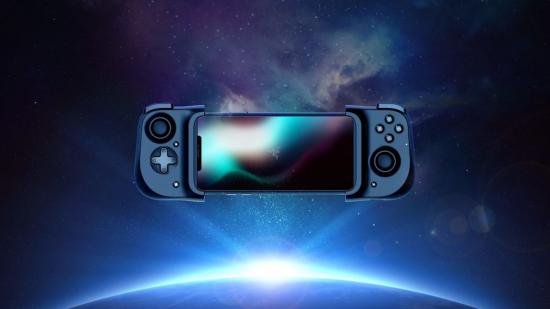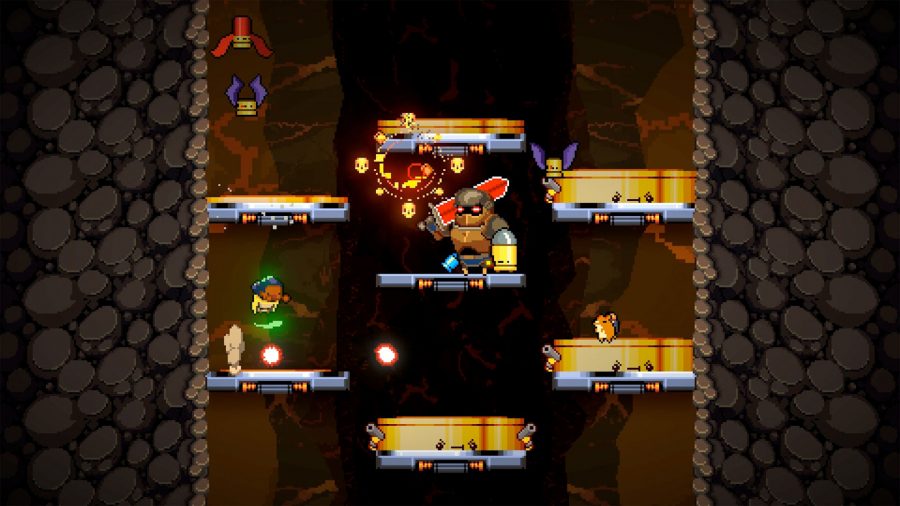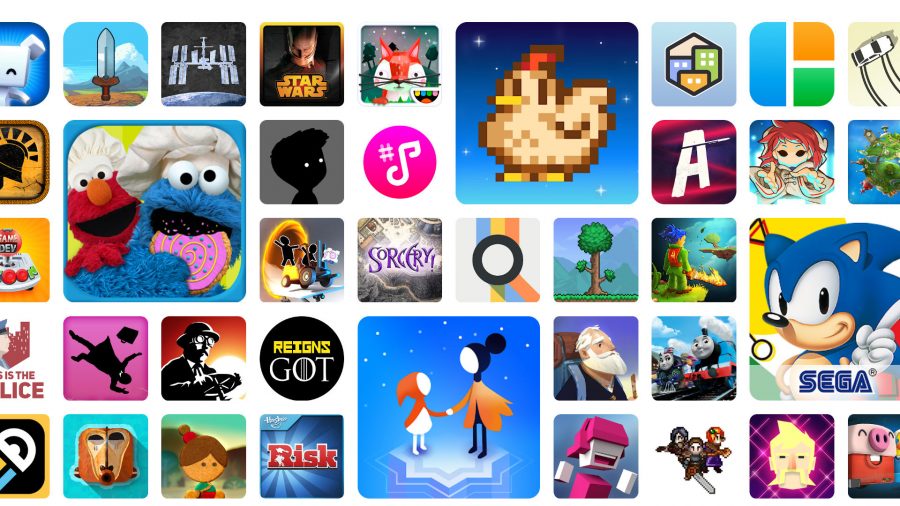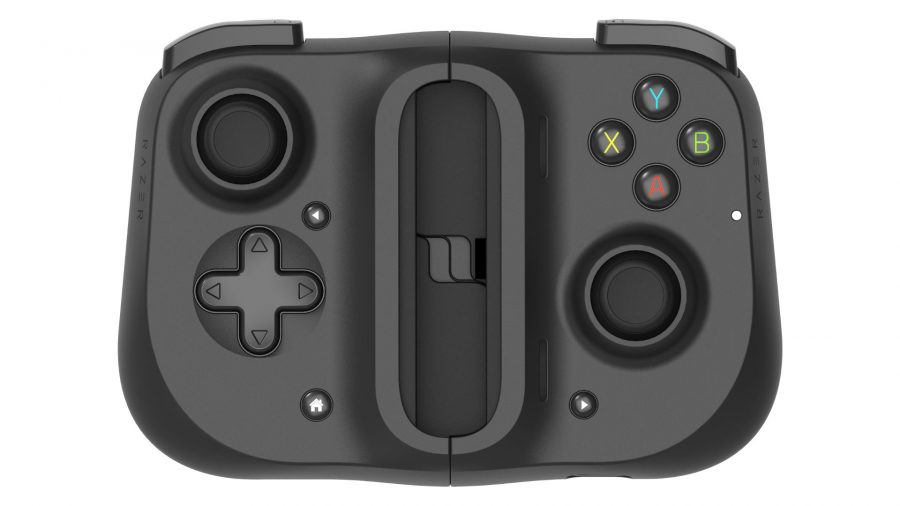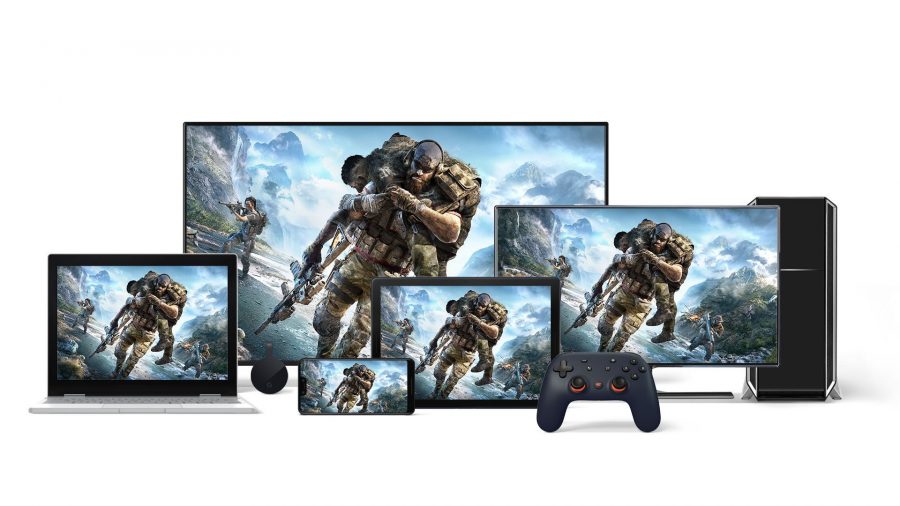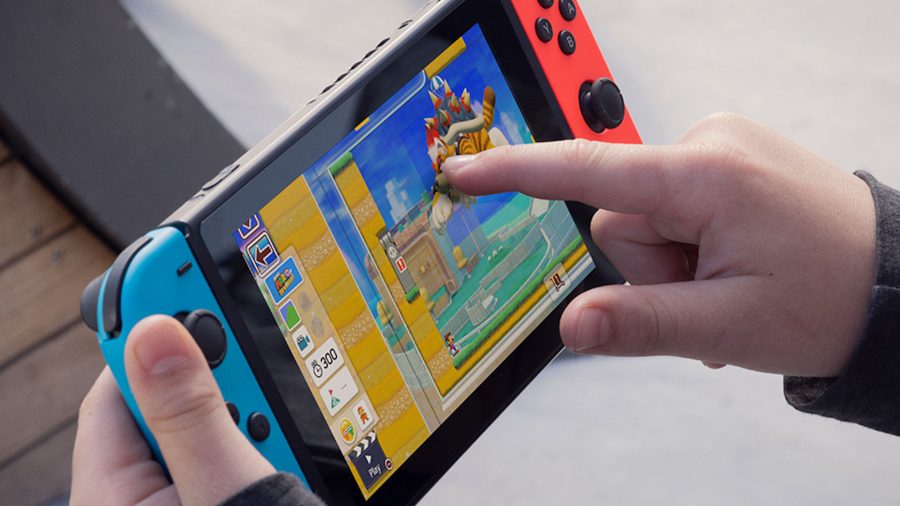Despite how you might feel about mobile gaming as a whole, it’s almost a dead certainty that, at some point in the future, it will take over as your primary gaming system. But before you close this article in disgust and denounce us as a bunch of nutters, bear in mind that, by the time it happens, how we will consume games on our mobile phones will have significantly changed.
It’s fairly clear at this early point in the article that we’ve already answered the headline question: no, mobile gaming is not ready to take over as your primary games consumption device. However, it is worth exploring the changes that have happened over the past few years, as well as some exciting upcoming features and technologies that could really help push us over the line.
But before we move onto the meat of it, we’d like to answer a question you’re likely asking at this point: why would we want to swap our PC/PS4/Xbox One/Switch/whatever for our phone? Well, that’s a terrific question, and we can answer it in a single word: convenience.
When Blizzard went on stage to announce Diablo Immortal at BlizzCon 2018, they were met with a strong negative reaction. “Do you guys not have phones?” designer Wyatt Cheng exclaimed in response to boos from the audience, who had just learned that Immortal wasn’t coming to PC. While we can understand the reaction from the audience, who are very passionate about the franchise and PC as a platform, there’s still a case to be made that it’s a short-sighted reaction.
Because Cheng isn’t wrong: we do all have phones. Why would Blizzard, and all publishers for that matter, not want to capitalise on a platform that, quite frankly, dwarfs every other. There’s a very good chance your grandmother owns a mobile device, for example, but she probably doesn’t have a PS4. We’re not saying that grandmothers are the gamers of the future, but it makes sense to try and target the place where you can reach as big an audience as possible.
Blizzard isn’t the only company that’s thinking in this direction either. Nintendo made a huge exception by releasing brand new entries in a number of its series on mobile; Fortnite, PUBG, and Call of Duty have moved onto the small screen; and we’re seeing mobile entries in huge MMORPG series end up having greater success than their PC and console counterparts. Black Desert Mobile and Lineage 2: Revolution are good examples of this.
However, we do also want to be fair to Blizzard’s audience, as well as anyone else who is skeptical of the platform: we’re well aware that it hasn’t exactly covered itself in glory. Dodgy monetisation practices, off-putting free-to-play mechanics, and lazy versions of our favourite gaming series have done far more harm than good, and it’s more often the case that these are in the limelight more often than the success stories.
So to be abundantly clear: yes, we completely agree that, to the outsider who only encounters the biggest games on mobile, it doesn’t exactly look like a thrilling prospect for the future of the medium as a whole.
But this does bring us nicely onto our next point: what are the success stories? What is it that the wider gaming audience is missing that could help propel the platform onto the next level? Well, let’s take a look at what’s going on right now and then take a look at the future.
Read more: Check out our Mobile Legends new hero guide to figure out what’s coming next
The Present: Apple Arcade, Google Play Pass, and wider controller support
The last couple of years have been particularly positive for the platform, with a number of small changes that have had a profound impact. Before the arrival of Apple Arcade, premium gaming on mobile was in a really bad shape. The general consensus among developers and publishers was that there was little point in releasing a premium game in a mobile market dominated by free-to-play. That was quite a shift from the early days of the platform, where you could release a little time-waster for a couple of dollars and make an absolute mint. You might remember Angry Birds, Canabalt, Tiny Wings, and more as early success stories.
But then the likes of Candy Crush, Clash of Clans, and Summoner’s War came along and changed everything with entire games designed, mechanics and all, around microtransactions. It makes sense from a sales perspective. If gamers were spending a couple of dollars here and there on different games, why wouldn’t they spend the same amount within a single game; especially when that single game is seemingly endless and features mechanics designed to keep you addicted, like leaderboards and drip-fed rewards.
The problem is, it quite quickly got out of hand, which is where we found ourselves right before Apple Arcade provided a viable alternative. There is nothing micro about a microtransaction that sits at $99.99, yet a huge number of free-to-play games feature a premium currency at that tier. It’s also very common to see players at the top of the leaderboards spending hundreds, if not thousands of dollars to maintain their place. You can easily see why core gamers are put off by that, when skill takes precedent elsewhere.
Apple Arcade has offered a path forward though, by demonstrating that premium games do still have a place on mobile, just not in the form they were traditionally available in. Instead of buying games outright, as we did in the past, we’re moving towards a single monthly payment that provides us with an increasing number of these types of experiences. Since launching in September 2019, Apple Arcade has now surpassed 100 games, and continues to get at least one new entry on a near-weekly basis (check out our Apple Arcade games list for the full line-up).
The potential of Apple Arcade extends beyond simply providing a new means to sell premium games though. Many of these experiences are available across Apple’s portfolio of devices, including Apple TV, iOS, and Mac. As a result, it can also step on the toes of what Nintendo is doing with the Switch. Thanks to cloud saves and controllers like the Gamevice, your average iPhone and Apple TV combo can now function very much like a Nintendo Switch.
Read more: Brush up on your skills with our Mobile Legends guide
Disclaimer: calm down, Nintendo fan. We get that there’s no Breath of the Wild on iPhone, and that Apple’s devices cost roughly four times that of the Switch, so it’s not an incredibly fair comparison. We’d argue that a phone is a necessity though, while a Switch isn’t. So, if your phone can do everything a Switch can, and at some point perhaps do it better (we’ll get onto that later), then many would simply stick with their phone.
Google also retaliated with the Google Play Pass, which provides a huge number of premium games that are already available on the store. It’s actually a nice companion to Apple Arcade, which focuses on offering exclusives; many of which are simply mobile exclusives. Sadly, it’s limited to the US right now, which has stalled the buzz surrounding it somewhat.
The future: Streaming services, razer kishi, and simultaneous releases
Looking forward, there’s plenty of reason to be excited about mobile too. In the not-so-distant future, we’re going to see streaming services actually launch on mobile, providing bonafide console games that you can play while connected to wi-fi (or a decent mobile connection). Again, no matter how you feel about streaming, the appeal is obvious; if it can work as intended.
Right now, you do need a pretty hefty internet connection to stream anywhere near the same level of quality as a console offers. Given that much of the world’s internet isn’t actually at that level yet, it’s a problem that’s waiting for a solution. However, if you do manage to run a streaming service on at least a 20mb connection, it’s pretty exciting stuff.
Google Stadia (check out our full Google Stadia games list), GeForce Now, and xCloud all offer actual console games that you can play on the go, without the need to download the games or updates. Given the lack of a need to purchase expensive hardware, these games often run a lot better on the cloud than they would on a console, and use far fewer resources on the user’s end as it is.
Read more: We’ve popped everything you need to know about Fortnite Chapter 2 in one place
Aside from the lack of a decent internet connection, there are two other issues that affect mobile too: the lack of a decent, dedicated controller, and the fact that no streaming service currently exists on iOS. xCloud is currently in beta testing though, so that could quickly change.
As for the controller issue, Razer is working on a solution in the form of the Razer Kishi, a Switch-like controller that attaches to any mobile (iOS or Android) and performs exactly as an Xbox One controller or DualShock 4 does. That means clickable analogue sticks and far more buttons across the board, fixing the only current issue with the Gamevice, the best option you can get right now.
Sure, you can connect a DualShock 4 or Xbox One controller wirelessly to your phone, but you’ll need an awkward clip, which turns your phone and controller into a 3DS-type setup, or you’ll have to simply have your phone in a stand at a distance. Neither is as comfortable as Nintendo’s Switch.
Also on the horizon is, surely, more simultaneous releases. We’ve already seen the likes of Fortnite, Hearthstone, Dota Underlords, and a bevvy of other big-name titles feature cross-play between all compatible devices, and other big titles like Dauntless and Apex Legends will possibly join that list shortly. Surely, we’ll get to a point where developers won’t treat mobile as an afterthought, but as a key platform.
As we mentioned earlier, certain genres are flourishing on mobile in a way that others can’t compete, like the MMORPG genre. Early signs also indicate that the best auto chess games on mobile and the best mobile card games have found a very comfortable home on the portable platform, so why not treat it as seriously as console and PC and launch alongside them?
The dream: Mobile docks, controller-only support, technology catching up
That’s a nice snapshot of where mobile sits at this point: on the cusp of greatness. We believe that, for it to grow as a platform, it does have to start competing in the same space as Nintendo Switch, PC, and the other consoles and it’s heading in the right direction.
Read more: Don’t let lockdown stop you from enjoying Pokémon Go at home
As an example, Apple’s current range of iOS devices are as powerful as an Xbox One S. It’s perhaps true to state that one of the only reason we don’t see big console titles hopping onto the small-screen is a lack of storage space. The standard iPhone models currently come equipped with 64Gb, while an Xbox One X or PS4 Pro features 1Tb as standard. That’s a fairly big discrepancy.
The other issue is Apple and, to a lesser extent, Google’s resistance to allowing games that only support controllers to exist on the App Store or Google Play. This is almost certainly impacting many developer’s decision to release on mobile, as well as just generally slowing down development. Being forced to try and figure out how to squeeze games with complex control schemes onto a touchscreen is likely off-putting.
We understand the reasons why Apple and Google are hesitant, even if Google did allow the Nvidia Shield range of devices to include a bunch of games that you could only play with a controller. What if an unsuspecting mobile gamer purchased an expensive game only to learn that they can’t play it, because it doesn’t support touch? You might argue that it’s their fault, but it’s a totally different audience and many of today’s gamers, that are brought up with touchscreens, won’t be familiar with it.
However, there are ways to help push this along, and the biggest of which is to release peripherals like an official Apple controller or an iPhone dock. It’s baffling that the latter doesn’t exist yet, though that could be down to Apple’s resistance to using USB-C technology. When the manufacturers do get to that point, nothing should stop Apple from releasing a dock that we can pop our iPhones in and fire games or movies up to our TV, without the need to purchase expensive extra content.
All it would take is for a Steam-like Big Picture mode to automatically take over when the phone sits in the dock, allowing you to use a remote or controller to play your favourite media content on your TV, with full 4K support. Similarly, if Apple were to release an official controller, whether it’s a clip-on or standalone, we might not be so uncomfortable with the idea of playing controller-only games on our phones.
It could be that Apple has all of this cooking up anyway. Recent rumours have suggested that the iPhone 12 will feature a new chip that offers the same level of power as the PS4 Pro, which is, in itself, about a third of the power of the upcoming Xbox Series X, which is set to be the most powerful gaming console of all-time. That’s a serious boost in performance from the current chip, which is about the same level as the 1.3 teraflops original Xbox One. In fact, it’s four times the power of the current chip, which is a remarkable achievement in just two years.
Read more: It’s been a bit of a mess, but here’s how to play Fortnite on Android
Not only does this fire a serious warning shot at Nintendo’s Switch, which doesn’t seem to have a more powerful ‘Pro’ variant in sight, but it should also have Sony and Microsoft looking over their shoulders. If that’s what Apple can achieve in two years, what about the next two? Could we see a parity with the next generation of consoles before that generation is over? Well, it’s entirely possible.
Is mobile ready to take over as your primary gaming system?
Okay, so it’s time to answer the question, and it’s a simple answer for most people: no, your phone is not currently ready to become your primary gaming system if you’re into console and PC games. It can’t offer the same types of experiences due to a lack of storage space, support for controller-only games, and gaming performance.
However, if all of the cards line up in its favour, we would strongly argue that we’re heading in that direction. Videogame streaming is showing remarkable potential, and if the rumours that Apple’s new iPhone will be as powerful as PS4 Pro are true, then that could be a game-changer in itself.
We’re on the cusp of receiving excellent new products too, like the Razer Kishi, which will make gaming on your phone more comfortable, and familiar, than ever before. We’re hoping the likes of that, and potential new controllers from Apple and Google, can usher in a new age of controller-only games, with a dock allowing us to fire these onto our TVs.
Perhaps this will lead to more developers taking mobile seriously as one of the core platforms. It’s already got the biggest install base of any gaming platform on the planet, so it makes sense to try and claw up some of that user-base. Let’s watch this space.
